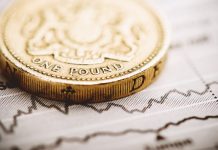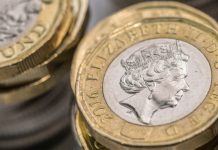- Pound (GBP) rose as PM remains in power
- UK composite PMI falls less than expected
- Euro (EUR) falls after mixed data
- German industrial production & Eurozone GDP data due
The Pound Euro (GBP/EUR) exchange rate is edging higher on Wednesday after strong gains in the previous two sessions. The pair settled +0.4% on Tuesday, at €1.1761 after trading in a range between €1.1647 – €1.1777. At 05:45 UTC, GBP/EUR trades +0.02% at €1.1763.
The pound pushed higher in the previous session as investors continued digesting the results of the leadership challenge against Prime Minister Boris Johnson. Johnson won the vote by a tight margin of 211 votes supporting him and 148 against him. This was a larger-than-expected rebellion.
Still, the pound focused on the positives, that there wasn’t about to be a change of leadership in government.
Data also showed that business activity in the UK slowed to its weakest level since early 2021 in May. The composite PMI dropped to 53.1, from 58.2 in April. However, this was an upward revision from the preliminary reading of 51.8, lifting the pound.
Today the economic calendar is relatively quiet with just the construction PMI data for investors to digest. Expectations are for activity in the construction sector to remain strong in May at 58.7, up from 58.2 in April. The level 50 separates expansion from contraction.
The euro weakened yesterday after a mixed batch of data. On the one hand, German factory orders unexpectedly fell -2.7% on a monthly basis. The manufacturing sector in Germany is struggling with supply chain disruptions and soaring energy costs.
Separately Eurozone investor sentiment improved by more than expected in June, rising to -15.8, up from -22.6 in May.
Looking ahead there is plenty of data to for investors to digest tomorrow, including German industrial output, which is expected to rise 1% month on month in April, after falling -3.9% in March.
Eurozone GDP data will also be in focus and is expected to confirm the preliminary reading of 0.3% growth quarter on quarter in the first three months of the year.





